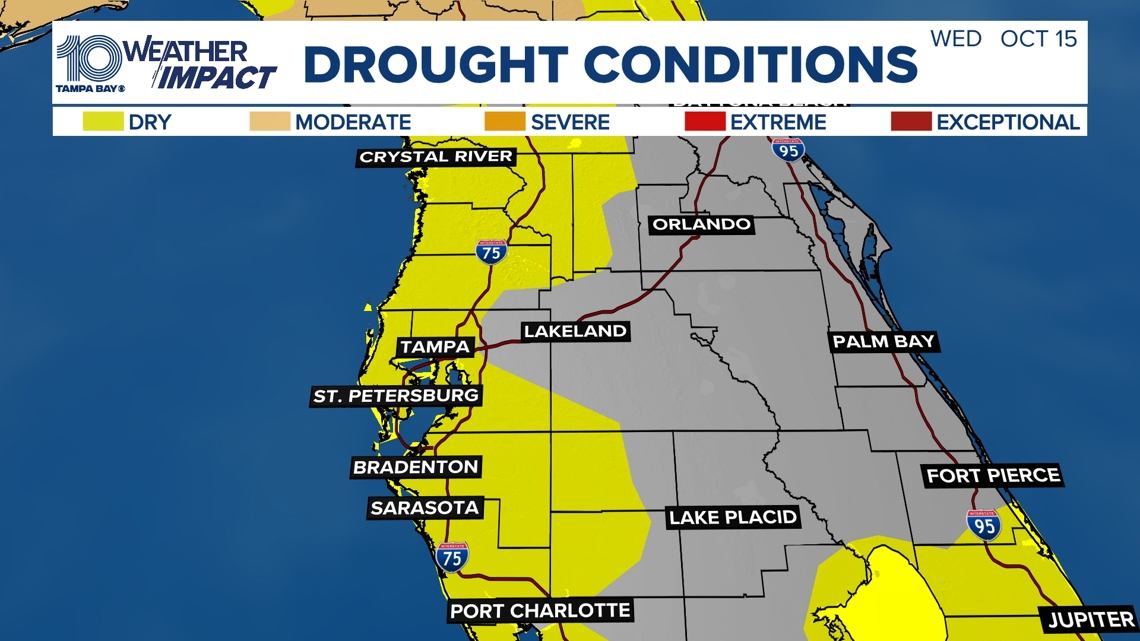Tampa’s rainy season runs from May 25 to Oct. 10.
TAMPA, Fla. — The rainy season has officially wrapped up across Tampa Bay, and for most of the region, it ended on the dry side.
From May 25 through Oct. 10, Tampa International Airport picked up 27.67 inches of rain, about 4.5 inches below normal. While Tampa wasn’t the driest spot, several nearby areas saw much larger deficits. St. Pete/Clearwater International Airport fell short by more than 12 inches, Brooksville missed the mark by over 10 inches, and Winter Haven finished about 8 inches below normal.
Farther south, however, rain totals told a different story. The Sarasota/Bradenton airport and Archbold Biological Station in Highlights County actually finished the season above normal, with surpluses of 4.35 inches and 5.93 inches.


This year’s deficit was made worse by an exceptionally dry finish to the season. September 2025 was the driest September on record in Tampa, with only 0.70 inches of rain — the lowest monthly total since record keeping began in 1890.


Overall, the 2025 rainy season brought fewer soaking storms compared to recent years. The region largely avoided tropical impacts, leading to fewer widespread downpours and a quieter wet season overall.
The rainy season, which typically delivers 60-70% of our annual rainfall, plays a big role in setting the tone for the months ahead. With much of the area now several inches behind, the U.S. Drought Monitor is already showing abnormally dry conditions west of I-75, including Pinellas, Hillsborough, Pasco, Hernando, Citrus, Manatee and Sarasota counties.


As we transition into the dry season, there are a few key signs meteorologists look for:
Sea surface temperatures in the Gulf drop below 82°FMoisture aloft begins to decrease, andSurface dew points fall below 70°F.
Early October often brings the first cold fronts of the season from the north, signaling the shift toward drier air and giving us that familiar sense of “false fall.”
With rainfall totals below normal and these seasonal changes underway, the months ahead could feature drier-than-average conditions and an increased risk for drought and wildfire concerns if the pattern continues.
